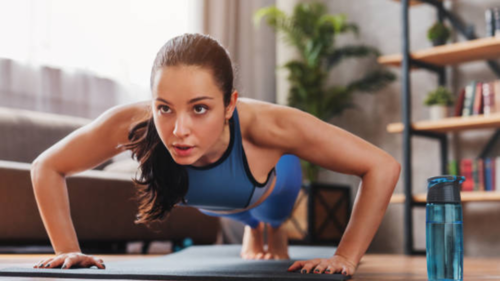Yoga is more than just exercise. It’s a way to connect your body, mind, and breath. A gentle daily yoga practice can help ease stress, improve your flexibility, boost your energy, and bring a sense of calm to your life. Whether you’re a beginner or someone returning to the mat, a consistent yoga practice can truly change how you feel—physically, mentally, and emotionally.
In this article, we’ll explore the benefits of daily yoga, how to start your own gentle routine, and a simple flow you can follow at home. You’ll also learn tips to make your practice stick.
Why Practice Yoga Every Day?
It Brings Calm to Your Mind
When you step on your yoga mat each day, you give your brain a moment of stillness. Yoga uses breathing techniques and mindful movement, which help calm the nervous system. Over time, this can reduce anxiety, ease depression, and improve focus.
Even just 10 minutes of yoga can make a big difference. You don’t need to do intense poses or spend hours in class. The magic lies in showing up for yourself each day.
It Helps Your Body Feel Better
Many people feel stiff, tired, or achy during the day. Yoga helps stretch and strengthen your muscles in a gentle way. This can improve your posture, reduce joint pain, and even help you sleep better.
You’ll also notice better balance, mobility, and flexibility. And as your body becomes more aligned and open, your energy levels naturally rise.
Start Slow: Build a Gentle Daily Practice
Set Realistic Goals
When beginning a daily yoga habit, start small. You don’t have to do an hour-long session right away. In fact, short practices are easier to stick with. Aim for 10–20 minutes a day, focusing on how you feel, not what you look like.
Choose a time that works best for your body. Morning yoga can energize you. Evening yoga can help you wind down. Find your sweet spot.
Create a Comfortable Space
You don’t need a fancy studio to practice yoga. All you need is a quiet space with a yoga mat, some soft lighting, and maybe a cushion or blanket. Wear comfy clothes and remove distractions like phones or loud TVs.
The more welcoming your space feels, the more likely you are to return to it daily.
Simple Daily Yoga Flow for All Levels
This sequence is perfect for beginners and those who want a gentle, mindful stretch. You can do it in 15–20 minutes. Focus on your breath and move slowly.
1. Seated Breathing (2 minutes)
Sit in a comfortable cross-legged position. Close your eyes. Inhale deeply through your nose for four counts. Exhale slowly for four counts. Feel your body relax.
This helps center your mind and prepare your body.
2. Cat-Cow Stretch (2 minutes)
Come to your hands and knees. Inhale, arch your back and lift your head and tailbone (cow). Exhale, round your spine and tuck your chin (cat). Repeat slowly with each breath.
This warms up your spine and improves flexibility.
3. Downward Facing Dog (2 minutes)
Tuck your toes and lift your hips up and back, forming an inverted V. Bend your knees slightly if your hamstrings are tight. Breathe deeply.
This pose stretches your back, hamstrings, and shoulders while boosting circulation.
4. Low Lunge (1 minute per side)
Step your right foot forward between your hands. Lower your left knee and lift your chest. Hold and breathe. Switch sides.
This helps open the hips and relieves lower back tension.
5. Child’s Pose (2 minutes)
Sit back on your heels with knees wide. Stretch your arms forward and rest your forehead on the mat. Breathe slowly.
This is a resting pose that relaxes the back and calms the mind.
6. Seated Forward Fold (2 minutes)
Sit with legs extended. Inhale, raise your arms. Exhale, reach toward your feet. Keep the spine long. Don’t worry if you can’t touch your toes.
This stretch releases tension in the back and legs.
7. Supine Twist (1 minute per side)
Lie on your back. Hug your right knee to your chest. Drop it over to the left and extend your right arm out. Look to the right. Hold, then switch.
This gentle twist helps with digestion and spinal flexibility.
8. Legs Up the Wall (3 minutes)
Lie on your back with your legs extended up against a wall. Close your eyes and relax your arms by your sides.
This pose improves circulation and helps reduce stress and swelling in the legs.
9. Final Relaxation (Savasana) (5 minutes)
Lie flat on your back, arms relaxed by your sides. Let your feet fall open. Breathe slowly and deeply.
This is the most important pose. It allows your body to absorb all the benefits of your practice.
Tips to Stay Consistent
Keep It Short and Sweet
Long routines can feel overwhelming. Short, gentle sessions are easier to commit to. Focus on how you feel after each practice. That feeling will keep you coming back.
Track Your Progress
Use a calendar, notebook, or app to mark the days you practice. Watching your streak grow can be motivating. Celebrate your wins, no matter how small.
Be Kind to Yourself
Some days, your body might feel tight or tired. That’s okay. Yoga teaches compassion—for others and for yourself. Even a few minutes of stretching or mindful breathing counts.
Benefits of Gentle Yoga Over Time
Physical Gains
You may notice less stiffness, fewer aches, better posture, and more strength. Your balance improves, and daily movements feel easier.
Yoga also supports your immune system and may reduce inflammation when practiced regularly.
Mental and Emotional Peace
Daily yoga calms the mind. You feel less anxious, more focused, and more positive. Over time, your ability to stay calm during life’s challenges improves.
Yoga also encourages emotional release. Sometimes we hold tension from stress, grief, or worry in our muscles. Gentle movement helps let go of what we no longer need.
Final Thoughts
A gentle daily yoga routine doesn’t require a big time investment or advanced flexibility. What it needs is your presence. Just you, your breath, and your mat.
Start with small steps. Let go of perfection. Breathe deep. Move gently. And most importantly—enjoy the feeling of coming home to your body and mind.
Soon, your yoga mat will feel like a safe space where healing and peace naturally unfold.









